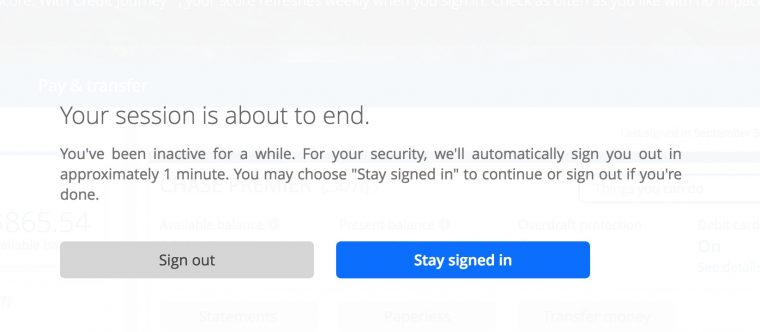Yes, I am no Obi Wan Kenobi, have no Jedi mind tricks, and am completely mangling the classic Star Wars line. But I like it.

In the notification letter I received last month for the institution I am adjunct teaching for (remotely) this semester, there was an offer to complete a New Faculty Orientation that was delivered online. That’s considerate of not my case of not being able to come to campus. There was even a $75 incentive, which to me is a nice touch.
I’ve flipped and flopped and flooped about writing about this experience, which was rather dismal, as it is my employer. But my educator conscious is deeply bothered.
So this online orientation was delivered through the LMS, Blackboard Learn. While I may have a reflex to bash the LMS, I’ve not seen the inside of one in a long time, and maybe never as a student.
While in total critical agreement with Sean Michael Morris, I’d say the design of such systems has a significant impact on the courses it pops out, somewhere behind all this is a person, an educator, maybe an instructional designer making choices about how to assemble them. And if they are good, they ought to be able to do some creative end arounds within the arcane structures there.
Again, my main complaint is not the dreaded LMS, but when I see this screen (it was a browser tab I left open and came back a day later), I have to scream that there is absolutely no excuse for a software, especially one that has been around this long, to present to a learner a red bannered ACCESS DENIED screen.

This is abhorrent, repulsive, and wrong on every front. Most modern web application systems like my bank, my insurance company, present warnings when my session is about time out, and if it does, will leave a human message, like

A humanly worded warning from my bank. Why can’t an LMS do this?
If I do not do anything, it lets me know “You’ve been signed out.”
There is a huge difference between that and ACCESS DENIED. Huge. I’m a human being damnit, my life has value.
Blackboard has been around about since the time my students were born, and they cannot do better human experience design than ACCESS DENIED?
I do not know if these screens are built into Blackboard or if it is the way it is locally set up, but this is wrong, vile on every level. What is a student new to online learning mean to feel upon seeing such a message?
But that’s easy pickings for criticism.
What’s equally bad is the “design” of this course (air quotes intentional).
Despite adding data tracking and more quiz tools, this Blackboard course I saw tells me the basic structure of the system has not evolved at all since I first saw it in the late 1990s.
It’s folders of folders of [folders of…] of documents all the way down.
Each course is a storage device (easily disposed of), inside you find folders for units, modules, and inside a recursive directory structure of more content files. The course I saw had 10 folders or units, in each one was a page with a list of objectives, a content folder that contained only an index of links to Word documents, Powerpoint files, external web links. Then there was an “assessment” a multiple choice quiz.
This course was set up that I could not proceed to say unit 2 until I passed the quiz does unit 1.
Let me break down few things.
I Don’t Mind Objectives But…
I fully accept that Objectives are useful when designing a course, like a sticky note that keeps you focused on how you design it. As a learner, I almost never look at them. First of all, they are not my objectives. They are the objectives of the course for me. Does the course care what I want to learn? Nope.
My objectives in taking a new faculty orientation might be:
- To learn more about the history, culture of the institution.
- To understand the students who attend it.
- To know resources, people who can support me as a teacher.
- To know other resources/departments I may need to use.
My objective is to be a great teacher and for my students to do exceptional work.
But the objectives of this New Faculty Orientation are really to tell me the names, locations, services of various administrative offices, to inform of policies. The opening unit did have some suggestions, quasi messages about teaching. The nine others had almost nothing to do with pedagogy.
It’s Lonely Out in Online Learning Space
This course had no voice, no character, no personality. And it treated me the same, there was nothing that acted like it was a person talking to me. It was really “Here are objectives, a pile of content, and you must pass the quizzes to proceed.” This is brutal, content-centric, non-human, un-empathetic design.
There was nothing to connect the disparate pieces of content, to weave connections.
And mostly, there was no social/presence of others. I was drifting alone in online learning space.
The opening unit was the only one I actually even saw humans. It was a one hour video of a provost welcoming new faculty at an in person orientation. (I should add, that the intro to the unit said estimated completion time as 20-30 minutes yet the content was an hour long video. Do the math).
This is huge design flaw in online instruction, that a video of what is done in person would be effective to an online learner (I should add the video quality was such that I could barely hear the people in the audience).
Meaningless, Inane Assessments
If you really want me to feel a sense of accomplishment in a course, for *****’s sake do not build it as a set of multiple choice questions that I can pass merely by analyzing the responses.
Frankly after sifting through that first unit, seeing that there were 9 more, I was ready to say fugggedaboudddit.
Then I had an idea. The end of unit “assessments” (which I will keep putting air quotes around) were 4-8 multiple choice questions. You had to pass them to move on to the next unit– by the way I find this lock step approach an insult to my intelligence, it’s a method right out of the ways prisons operate.
When you submitted a quiz, it told you what you got right and wrong, and offers the chance to retake the quiz.
That’s where my light bulb went BING. I would do what any student would do. Given this brutal instructional treatment, my objective now is to jump through the system hoops as quickly as possible to get back to doing something worthwhile.
I decided to skip all the unit content, and go directly to the quizzes. When I got my results, I wrote down on a piece of paper the correct answers, and retook the quiz.

In this way, I completed the entire course in about 75 minutes, while I ate dinner. I have always been skilled at multiple choice tests (is there a job where I can use this skill?), and in fact, without reviewing any content, I passed on the first time through the units on Instructional Computing, Ethics, and Affirmative Action.
These are the types of questions I could answer simply by discarding the obvious wrong ones or just applying logic.



These are obvious (well to me) terrible assessment questions. When I see these kinds of questions, it signals to me “This is a game” that they don’t really care about what I have learned, they care about looking like they care about what I have learned. This assesses absolutely nothing.
When I lose respect for your “assessment”, I lose respect for your content, and your objectives. It’s not only disposable, this is completely worthless no matter how many charts and graphs you can generate from its data.
Fin
In the end, none of my objectives for is faculty orientation were met. And the fact I can pass the “assessment” without seeing a shred of content should signify the designers objectives are not met either. My objectives became “how can I pass this thing as effortlessly and quickly as possible.
I have no idea how widespread this style of course design is in higher education. It scares me to even wonder. This is not totally the fault of the LMS, a person or group of persons made these design decisions and put them into place.
The answer is not in the technology, it’s PEBKAC.
And now I have to wonder if the Storm Troopers are coming after me…
Featured Image: I’m sitting here in pieces, and you’re having delusions of grandeur! flickr photo by pinkpurse shared under a Creative Commons (BY-NC-ND) license



Hi Alan, I agree, and sympathise.
The access denied screen is built into blackboard. It will time out if you take too long filling in a form, say filling in a rubric while reading a student’s essay. Don’t spend too long thinking about what feedback you’re going to give. I don’t know about the wording on the screen, but the period for the timeout can be set by the blackboard system admin. I came to the conclusion that blackboard is the way it is because neither those who develop it nor those who maintain it ever use it for teaching or learning.
On the multiple choice questions, I enjoyed answering the questions from a similar “unit of online learning” without reading the content or the questions, just the answers. I got about 90%
Thanks Phil. It’s no problem for me since I don’t use Bb for teaching. I maintain there is no excuse for a company that big, with that many developers, doing this for close to 20 years, with that much money to have that kind of screen.
But it looks downright elegant compared to the truly wretched SIS and other admin systems that are barely a notch above DOS based screens.
You should be a consultant. 😉
Ewww, gross.
My wife is K12 teacher and has to build her assessments in Skyward, which is even worse than BB. But even the *modern* Canvas LMS makes it really difficult to embed interactive as or branching video, capture learner response and store it in the grade book. I know the LMS market has to deal with a ton of regulations, but having spent a couple decades building hit video games, I know how to engage a learner and none of the LMS vendors can do it today.
Alan, thanks for sharing, and your astute observations are pertinent to the work me and my colleagues at Charles Sturt are grappling with every day. Yes, we are ‘stuck’ with Blackboard, and that ‘Access denied’ red screen drives me crazy too!
I think we have all ‘passed a course’ successfully via faking the multiple choice at some point – I know I did to receive PhD candidacy with the mandatory library research course (ooops…..now it’s public!).
Your confession is safe with me, Julie 😉
The Bb screen is a bit of a distraction, and a lot of people who responded i twitter focused on Bb as the problem. As much as I shrug on the LMS, everything I criticized could have been done much better and effectively and still be inside this LMS; a human is responsible for this, not the machine.
It’s a great case study example, though, so it is fulfilling a public service. 😉 In part, there’s possibly an element of the fact that these obligatory induction training things are usually something that few people actually care about, that includes the poor soul given the task of producing the stuff as well as those forced through the motions. So it’s perhaps hardly surprising that it’s like this. The pertinent question, of course, as you suggest, is how typical this example is of actual courses that students are subjected too.
Good point Iain though I doubt any teacher would accept that excuse from a student!